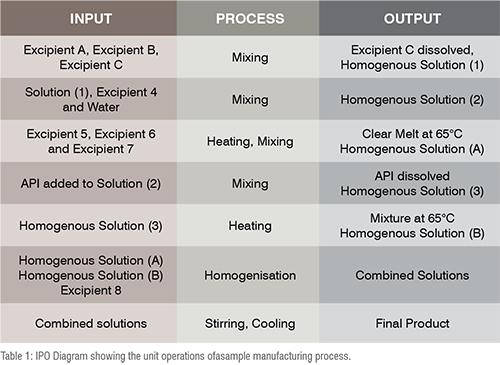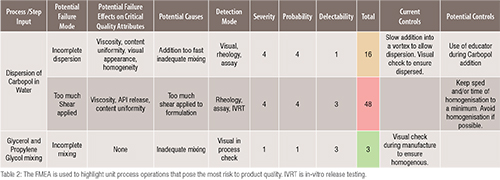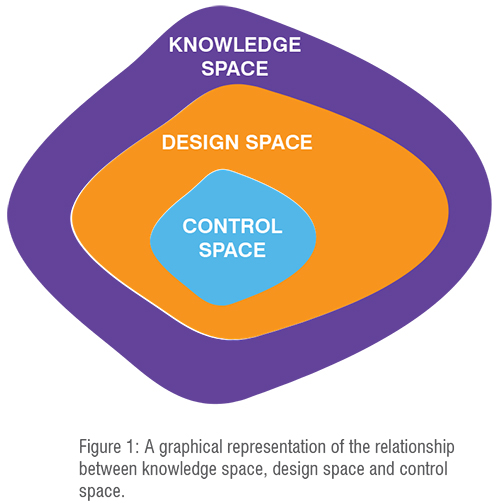Scaling up the manufacture of a topical drug formulation to supply toxicology, clinical, and commercial batches requires a well-defined strategy. Process development requires modest time and financial investment and it is not only development programmes for New Chemical Entities (NCEs) that can benefit from process development.
By 2022, the Global Topical Drug Delivery market is expected to exceed more than US$125.5 Billion. The Asia-Pacific market is expected to witness the highest growth driven by the increasing economic power of the expanding population. Robust supply chains and manufacturing processes for these complex formulations will be fundamental in order to capture this growth. Robust manufacturing, in particular, requires the supplier to have scaled up the manufacture of a topical drug formulation based on well-planned strategy. Process development requires modest time and financial investments when compared to the risk of batch failure and its consequential impact on project timings, costs, and success. Development programmes for generic drug products as well as for new products based on New Chemical Entities (NCEs) can benefit from structured process development, a step that is often mistakenly omitted. In the case of generics it is often not understood that originator products may not have been fully optimised and the correct process parameters needed for their consistent manufacture may not be well defined and some critical parameters may be on a knife edge.
The impact of a structured Quality by Design (QbD) approach remains with a product throughout its entire life and de-risks initial scale-up for toxicology or clinical batches through to commercial scale and future plant-to-plant transfers. In combination with six-sigma tools, QbD provides a methodology from which a robust process control strategy can be derived. This approach to built-in quality has multiple benefits: Very importantly it demonstrates to regulatory authorities that the product owner has established control over consistent manufacturing. It also reinforces the commercial viability of the product. It addition to using experimental design to challenge Critical Process Parameters (CPP), there are a number of different six-sigma tools that add to the power of the QbD approach. These include, Failure Mode Effect Analysis (FMEA), input-output diagram, voice of the customer, benchmarking, and evaluation criteria.
Defining a control strategy around Critical Material Attributes (CMAs) and CPPs is of particular importance with semi-solid products. The composition of these semi-solid products is carefully derived by considering all aspects of the target product profile while acknowledging the scientific and technical constraints imposed by the API, the excipients and their combination. The characteristics of each material used can not only have a profound effect on the resultant formulation for both safety and efficacy, but they can also heavily influence, even dictate, the manufacturing process. This is especially the case in areas such as dissolution, mixing parameters, and heating or cooling processes. The safety and efficacy of topical pharmaceutical formulations are clearly intimately associated to the composition of the product. There often exists a lack of appreciation for the relationship between clinical performance of topical formulations such as creams, gels, foams, and ointments, and their microstructure, which are typically highly dependent on upon manufacturing process parameters.
A process development programme targeting product optimisation must be taken into account a broad range of processing parameters in order to ensure its consistent manufacture to the chosen specification. Creams are notorious for being one of the more complex topical pharmaceutical formulations. For these products require defined processes for the combination of two immiscible phases including order of addition, speed of mixing and stirrer timings etc. More often than not, a controlled heating and cooling rate during the process will also need to be pre-determined. The more complex these various processing requirements, the more the CPP is expected to have an influence upon the control strategy and greater is the complexity of the scale-up programme.
The Quality Target Product Profile (QTPP) ensures that the broad objectives of the project are captured and is a key tool to use from the start of any pharmaceutical development programme to ensure the overall objective is understood. It covers the patient and prescriber requirements and the attributes needed to ensure a safe, effective, and commercially viable treatment. When determining the impact of material attributes and process parameters on product quality the QTPP should always be referred back to. Using the QTPP, the critical quality attributes (CQAs) of the product may be determined in combination with assessing the likely impact of individual raw material attributes and processing parameters on product quality. Benchmarking against competitor products, especially in the generic-drug market, is a useful guide to the QTPP as it can highlight key commercially relevant differentiators for the new product1.

A six-sigma tool to aid the compilation of the QTPP is Voice of the Customer (VOC) as it allows both the company sponsoring development and the end-user to provide clarity on their requirements. In the case of a topical pharmaceutical product, the VOC or patient voice is paramount alongside other significant ‘voices’ such as prescribers and investors. Simple surveys of patients or Key Opinion Leaders (KOLs) are a highly effective means of acquiring valuable VOC data, and for orphan products, this is often efficiently captured through internet-connected patient groups. VOC and the QTPP play a crucial role in the determination of CQAs2.
A key component of any efficient process development programme is risk identification and mitigation. It is widely recognised that the deployment of FMEA as a risk management tool, together with an appropriate design of experiments, leads to control strategies that reliably produce drug products of the appropriate quality. This is the case whether they are based on NCEs or generic drugs. FMEA is a sequential approach for estimating the potential risk arising from all possible failures in the design or processing of the topical product. If any potential risks arise, the FMEA defines the most suitable process controls in order to highlight where efforts should be deployed in risk mitigation. Whether by design or necessity, many liquid and semi-solid topical pharmaceutical products are highly complex systems. These products often involve multiple phases (e.g. oil and water emulsions) with a defined range of droplet sizes. As such, failures can occur in a number of varying processing areas, including, but not limited to, heterogeneity of drug content, or consistency, and physical, chemical, or microbial instability. The homogeneity, stability and ease of use heavily impact the efficacy, uniformity of dose, and safety of topical pharmaceuticals.
The CPPs are derived by establishing the relationship between the processing parameters, the CMAs of both the API and excipients, and the CQAs of the product. A succinct way of expressing the process parameters is the six-sigma input–process–output (IPO) diagram (see example in Table I). The IPO diagram highlights the unit operations and which operational parameters should be investigated during the manufacturing process.

A pre-screening study is the first form of experimental design (DoE) derived from the outputs of the FMEA (see example in Table II) and the IPO diagram. The objective of this stage is to confirm the output from the FMEA, uncover any interactions between key parameters, and to distinguish any truly critical processing parameters. The FMEA allows the operator to capture the knowledge and decide which areas of the process are most critical and require further experimental investigation and the DoE then validates this thinking statistically and quantitatively. Pramod et al. noted that “though design of experiments is not a substitute for experience, expertise, or intelligence, it is a valuable tool for choosing experiments efficiently and systematically to give reliable and coherent information”. Both the experience and expertise of the technical project team and efficient experimental design software are essential for this approach.
It is essential for topical formulations that during the pre-screen and full DoE experiments are conducted using equipment that is representative of larger-scale equipment in order to derive meaningful qualitative CPP data. At MedPharm, IKA LR1000 lab reactors are used, which allow for the control of all typical processing parameters. This approach crucially avoids ‘noise’ generation and ensures the quality of the output and therefore the robustness of the resultant control strategy. Understanding the influence of scale on the CPP from high-quality experimental work conducted on a small scale forms the basis of any future scale-up work and technical-transfer activities.
For a complex cream, typically 12 experiments covering two to four CPPs are conducted in a pre-screening study in preparation for the manufacture of toxicity or clinical batches. The need to expand the actual number of experiments will depend on the outputs from this early screen and the associated risks.
Experimental design in both the pre-screen and full study should ideally attempt to push the product to failure to allow clear understanding of the design and control space boundaries. Problems can arise if the developer is conservative in experimentation due to a misunderstanding of the boundaries between success and failure (see Figure 1).

A third important factor is the identification of what six-sigma calls the Key Process Output Variable(s) (KPOV), those that determine success. It is critical to have evaluation criteria to establish whether the method employed to measure the KPOV will detect critical failure. If not, a mitigation plan needs to be in place as the output of any experimental work will only be as good as the analytical method allows. An array of analytical techniques is required to evaluate the quality of topical pharmaceutical products. These range from commonplace methods, such as High-Performance Liquid Chromatography (HPLC) and viscosity testing, to more sophisticated methodology, such as rheological evaluation, accelerated stressing to show the potential for separation, and in-vitro release testing to check that there is no change in the release/thermodynamic activity of the drug from the formulation.
The design space is defined as the multidimensional combination and interaction of input variables and process parameters that have been demonstrated to provide assurance of quality 3. It satisfies the QTPP and CQAs for the product and provides the boundary of any process parameters to which a product can be made. It is important to stress that the knowledge space is not a hard boundary and that defined process inputs are just as important as the measured output. Interpretation of the DoE using statistical techniques such as Analysis of Variants (ANOVA) plots, which show the mean and distribution around the mean, should clearly show the significance of any parameter and any key interactions between parameters and any associated variability. With an increase in sophistication of many experimental design software packages (e.g., SPSS, Minitab, JMP, and Design Expert) it is easier than ever to highlight statistically significant affects across a range of parameters and present them in a concise graphic that decision makers find easy to understand.
It is important to note that any process change made within the design space is not considered a regulatory change, and hence, directly allows for the flexibility of any future manufacturing process. Having a strong understanding about the boundaries of success and failure from the outset, creates a foundation for a good control strategy. Furthermore, it reduces the impact any changes in excipient suppliers and specifications or site of production may have upon a product over its lifetime.
The control space represents a range of critical parameters within which the process will yield an assured output to meet the CQAs and target specification at all times. The further use of experimental design is essential when navigating from the design space to the control space. This will typically involve, two to five factors in full, or fractional factorial, or some other surface response design informed by the data from previous experiment design work. A useful guide to DoE in this scenario can be found online in the form of the engineering statistics handbook .
Undoubtedly, the control space for the CPP must sit well within the boundaries of the design space and sufficiently away from the edge of failure to ensure robustness. The outcomes of an optimisation design will provide interpretation and conclusions to show the most desirable settings to achieve a topical product that meets the QTPP and CQAs. A confirmation batch using these settings aims to demonstrate that the response values from the DoE are close to their predicted values.
Conclusion
Using a step-by-step and disciplined QbD approach during the development and late-stage formulation of topical products provides a sound and robust platform in establishing the design space for process development. This methodology will ultimately enable the developer to provide a reliable control strategy for manufacturing. The often-complex liquid and semi-solid processing for topical products cannot be underestimated and missing this critical step, as is often the case in the past, can lead to poor processing and physical instability in topical products, which directly impacts development timelines, product performance and ultimately patients. The marriage of experience, QbD, six-sigma tools, and experimental design ensure that the manufacturing scale-up of complex topical products can be conducted with minimum risk. Above all, the experience of industry leaders has shown that a well thought out QbD-based process development strategy with in-depth knowledge of the products and processes de-risks topical formulation development, saving both time and money.
References:
1 http://www.pharmtech.com/qbd-strategies-secure-scale-semi-solid-topical-formulations?pageID=2
2 http://www.pharmtech.com/qbd-strategies-secure-scale-semi-solid-topical-formulations?pageID=2
3 https://www.camo.com/products/pat-qbd-overview.html